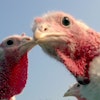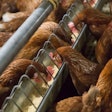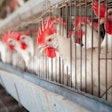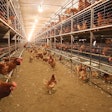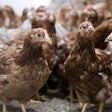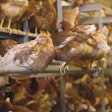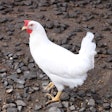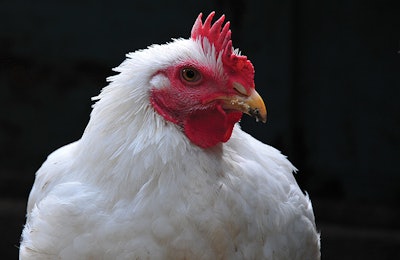
While declaring the successful resolution of a long-term battle to control the H5N1 variant of highly pathogenic avian influenza (HPAI), Vietnam has reported new outbreaks in poultry related to two other virus subtypes.
In recent weeks, authorities in Japan and Laos have also declared earlier HPAI outbreak waves resolved. However, the disease continues to cause sporadic outbreaks in India. A boy in the north of the country has become the world’s first victim of the H5N1 flu virus this year.
In early June, the H5N8 HPAI virus was detected in Vietnamese poultry for the first time.
According to the national veterinary authority’s official reports to the World Organisation for Animal Health (OIE), four outbreaks in the north of the country had been confirmed by the first week of July. Affecting a total of more than 9,100 birds, the disease has been detected in two backyards, and in two village flocks. These were located in different provinces in the Northeastern and Red River Delta regions of northern Vietnam.
Around one month ago, the H5N6 HPAI virus was detected in two village flocks in other northern provinces. Each with around 300 poultry, affected flocks were in the Northeastern and North Central Coast regions.
These bring the total outbreaks involving this virus subtype in Vietnam to 56 since August of last year. Reported losses of birds over this time amount to almost 21,000 mortalities and a further 99,000 birds culled to prevent further spread of the infection.
Three Asian countries declare avian flu ‘resolved’
In November of 2020, Japan confirmed its first cases of HPAI linked to the H5N8 virus variant in poultry for almost three years. Since then, authorities have confirmed 65 outbreaks of the disease to the OIE, directly involving almost 10 million birds.
In mid-July, however, they reported the disease situation “resolved.” The most recent outbreak was in Haga town in Tochigi prefecture in mid-March. By April 10, this outbreak was considered ended, and there were no further cases.
As well as domestic poultry, 31 wild birds in Japan tested positive for the same virus variant between December of last year and early March. The nation’s animal health agency also considers this disease event resolved.
In the Lao People’s Democratic Republic (Laos), the HPAI situation has also been officially declared closed.
Based on reports to the OIE, two outbreaks linked to the H5N1 HPAI virus were confirmed in August and September of 2020. Involving a total of 1,539 poultry, these affected to two neighboring village flocks in the southern province of Salavan (Saravan).
Despite the ongoing outbreak waves elsewhere in the country, Vietnam has declared to the OIE that the H5N1 HPAI outbreak wave has now passed in its southern provinces.
According to the latest official report from the veterinary authority, 15 outbreaks linked to this virus variant occurred between July of 2020 and May 10 this year. Around 25,400 birds were directly involved in these outbreaks, including in seven that occurred this year. The four most recent reported outbreaks were in village flocks of up to 5,000 birds in the Mekong Delta and South Central Coast regions during the month of May.
While not yet reporting the current outbreak over, Iran’s animal health agency has recently informed the OIE that there have been no new cases of HPAI. Since the H5N8 HPAI virus returned to the country in December of 2020, 55 outbreaks have been officially registered with the OIE. These involved more than 13,000 mortalities and almost 1.3 million birds culled to prevent the further spread of the disease. The most recent cases were detected at a market in the capital, Tehran, in early June.
Suspected avian flu outbreak in southern India
In the state of Kerala, further cases of suspected avian flu were reported at a poultry farm last week. According to The Hindu, around 300 birds had previously been found dead at the premises in the district of Kozhikode. Samples taken from the farm were positive for avian flu, but the infection is yet to be officially confirmed and identified.
In the meantime, poultry movements are suspended at the farm and those nearby. Officials are carrying out surveillance within a 10-kilometer radius.
According to The News Minute, Kerala declared avian flu a “state disaster” just a few months previously.
As well as Kerala, Indian authorities have officially registered outbreaks in poultry linked to the H5N8 HPAI virus in the states of Haryana, Gujarat, Madhya Pradesh and Rajasthan earlier this year. Poultry and/or wild birds in five states (including Punjab) have tested positive for the H5N1 virus subtype.
South Korean egg sector still in recovery
In the second quarter of this year, the number of laying hens in South Korea was still down by more than 12% year-on-year.
According to the Yonhap news agency, this was attributed to the continuing impacts of the earlier HPAI outbreak. Number of these birds stood at 65.9 million, compared with the previous year’s 74.9 million. Compared to the previous quarter of 2021, however, the layer population has increased by more than 6%.
Around 30 million poultry were culled between South Korea’s first cases of H5N8 HPAI in November of 2020 and the most recent outbreak in early April of this year. A total of 109 HPAI outbreaks were confirmed in the country over that period.
Human avian influenza A cases in India, China
The first confirmed case of avian influenza A(H5N1) of this year has been reported in India. According to Indian Express [https://indianexpress.com/], an 11-year-old boy recently tested positive for this virus at Gurgaon in the northern state of Haryana.
Local teams were surveying villages and poultry farms in the surrounding area to identify any further cases or the source of infection. Those who come into close contact with poultry are urged to wear gloves and protective equipment, and to wash their hands frequently. Poultry owners have been advised to contain poultry, and to dispose of any sick or dead birds with the utmost caution.
Although the patient tested positive for the influenza virus, Times of India reports that the cause of his death was identified as leukemia and its complications.
According to the World Health Organization (WHO), the last confirmed case related to this virus subtype was in Laos in October of 2020. Between January of 2003 and early July of this year, there were 862 cases of human infection with avian influenza A(H5N1) virus in 17 countries. Of these cases, 455 were fatal.
In mid-July, China registered a further human case of avian influenza A(H5N6). According to Hong Kong’s Centre for Health Protection [https://www.chp.gov.hk/], the patient was a 55-year-old man in Bazhong city in Sichuan province. Investigations revealed he had had recent contact with live poultry. This brought to 33 the total number of human cases of this virus infection since 2014. All but one of these have been in mainland China.
In June, the WHO was informed about two recent human infections with avian influenza A(H9N2) virus. Both of these were also in China.
View our continuing coverage of the global avian influenza situation.

